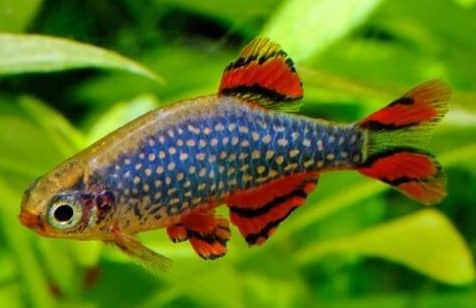Goldfish Pampering – Overfeed Then Turn Your Adorable Goldfish Into a Gourmet Sandwich
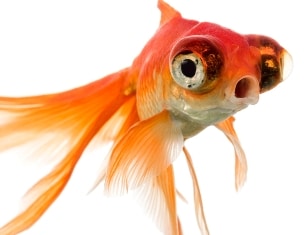
History of Keeping (And Cooking) Goldfish
Scientifically known as Carassius Auratus, the goldfish is a descendant of the Cyprinidae family, which includes the crucian carp and the Prussian carp found in Europe and Siberia. The goldfishs original habitat is the slow-moving, freshwater bodies of Eastern Asia and China.
Historical records suggest that the Chinese were the first people to breed and rear goldfish. They were first raised as food during the Jin Dynasty, between 265 AD and 420 AD.
We continue that fine tradition of raising them to put on the grill or stovetop.
It was not until the Song Dynasty of 960-1279 AD when the rearing of goldfish as pets became ingrained in the Chinese culture.
Goldfish keeping in China, particularly the yellow/gold variety, was restricted to the imperial family, as its color was widely associated with royalty. These “royal” fish were placed in small containers and displayed to guests during special occasions.
The non-noble populace could only rear the silver, green, orange or dark grey variety, all meant for food rather than display purposes. Goldfish are easy to raise so I can see a Chinese family living on goldfish hundreds of years ago.
Interestingly, it took close to 400 years more before the goldfish found its ways to Europe and the Americas. Ever since then, it has become one of the most common aquatic pets worldwide.
Goldfish Habitat
The goldfish is highly acclaimed for its resilience. Essentially, the fish can survive in almost any type of freshwater environment. Its preferred natural habitat includes cool, slow-moving freshwater bodies. The fish can also live in murky conditions, stagnant backwaters and cloudy waters. These conditions are actually ideal since there will be plenty of insect larvae, crustaceans, detritus, zooplankton and various aquatic plant matter for the fish to feed on.
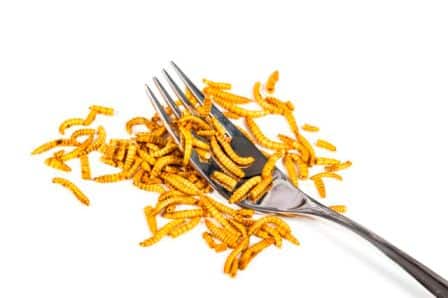
Eating this diet, including the insects give the Goldfish its distinctive flavor.
When kept in an environment similar to its native habitat an aquarium goldfish can reach 10-12 inches when fully grown which means they will require a 100 gallon or larger aquarium. The reason for such a large tank is that they grow wide (think fat) too, which means a 12 inch goldfish is the equivalent of 85 one inch fish.
In the wild a goldfish may exceed 16 inches and weigh up to 10 pounds and can feed a family of eight quite comfortably.
I’ve actually caught a goldfish when I was fishing in Colorado. It was a big, docile fish that didn’t put up any fight. I threw it back in, but that was probably a mistake considering that goldfish are invasive.
Goldfish love cooler waters with temperatures ranging from 68 F to 78 F. For this reason, you should avoid keeping the fish in tropical aquariums. If no other fish is kept with your goldfish you won’t need to heat the tank. In fact when kept outside goldfish will hibernate during the winter even if their pond is covered in ice.
I had a pond in my backyard that froze sometimes. The goldfish were fine. They bred like crazy in the spring when the weather warmed up.
Goldfish are one of the most recognizable freshwater aquarium fish. Plus they are non-aggressive and fun to watch.
Goldfish are also go great in many fish recipes. In fact I saw a recipe for homemade goldfish crackers and there’s no reason you couldn’t mix in a little finely ground goldfish. You could call them “goldfish, goldfish crackers.”
There are about a dozen types of goldfish are most commonly kept in aquariums. Goldfish can undeniably make great starter aquarium fish. Expert aquarists can also enjoy raising more challenging types like the “bubble-eye” goldfish. Goldfish are fairly easy to maintain as long as they’re well fed and the water is kept sparkling clean. With proper care and feeding, goldfish can live for up to 10 years, although one goldfish reportedly lived for 43 years.
The longer a goldfish lives the larger it gets. Old goldfish therefore would make great, big fried fish filets. To fix fried goldfish filets you’ll need a couple of goldfish filets. Dip them in whipped eggs then dip them in corn meal or flour. Fry in a hot skillet filled with oil. When they’re done serve with French fries or cornbread and coleslaw.
Contrary to popular belief about their memory, goldfish are relatively intelligent aquatic animals. They easily recognize individual faces of their caregivers and their reactions moments before feeding can attest to this. I.E. Don’t take a filet knife near the aquarium.
Caveat: This actually informative article was written tongue in cheek, and is not meant to offend.
Colors, Common Types and Appearance
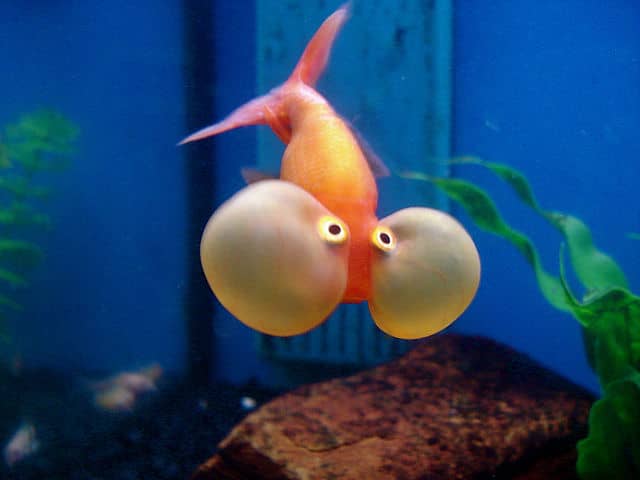
The most interesting fancy goldfish are bred in Japan, China, and Thailand. These fancy goldfish can be purchased in a wide variety of colors and appearances. The most common colors include, red, silver, orange, yellow, grey, white, black, and calico. Initially, yellow and golden goldfish were non-existence. However, due to genetic mutations encouraged by goldfish breeders, orange, yellow and gold have become the most predominant colors associated with goldfish today.
The color of the gold fish also affects what side dishes are served with your goldfish dish. For example, you wouldn’t want a red gold fish entrée and a bowl of spinach on the same table, unless you were eating your traditional Christmas goldfish feast.
Because goldfish have been kept and bred for so long there are many different types and traits including bright colors, unusual fins, protruding eyes, and strange growths.
How To Grow A Large, Healthy School of Goldfish
Goldfish growth rates depend on their environment and the amount of food they receive. Notably, wild goldfish in their natural habitat tend to grow at a much faster rate, because they have access to plenty of food. In addition, they have lots of space.
Aquarium goldfish grow can stagnate, especially if the tank is overcrowded. With this in mind, it is prudent that you acquire the largest aquarium you can for your goldfish pet.
How to make a McGoldfish sandwich:
Cut a cooked, breaded goldfish filet to fit on a bun
Steam the bun, then add the goldfish filet, a slice of American cheese and a splat of tartar sauce.
Serve hot with fries and a chocolate shake.
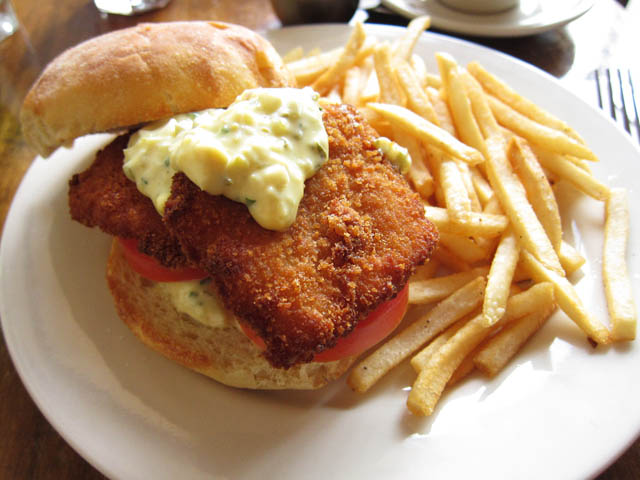
Feeding Habits
Goldfish are omnivorous, and they have big appetites. Interestingly, despite the large amount of food that they eat, they do not have a stomach, but a long intestinal tract that acts as the digestive system. This explains why they can eat plenty of food in one meal. Without a stomach they never really get “full” (unlike you after a large goldfish dinner).
What Should You Feed Your Goldfish?
You should feed your goldfish high-quality food such as algae, plankton, larvae, veggies, insects, worms, fruits, frozen fish foods and fish flakes. This will ensure that they achieve their full potential growth. Feeding your goldfish a large variety of food is key to a happy, healthy pet. You should feed your goldfish a generous amount of food 2-3 times a day.
Studies show that goldfish can and will eat uncontrollably so long as the food is available, kind of like some people. However, this can be harmful to their health since overfeeding can kill any aquarium fish plus it means there will be more excretion and contamination of the aquarium.
Conversely, too little food can cause nutritional disorders, subsequently preventing your goldfish from growing to its true potential. With this in mind, it is prudent that you learn how to strike a balance during mealtimes.

Goldfish Life Span
Contrary to popular belief, goldfish are arguably one of the longer lived fish species. Unbelievably, the longest living goldfish ever recorded in history lived for 43 years. This simply means that with proper conditions, a goldfish can live for a relatively longer time than what most people allude (I.E. don’t put your new pet in a goldfish bowl).
The average lifespan for goldfish kept in a pond or water garden is about 20 to 30 years depending on the living conditions. Goldfish living in an indoor aquarium often live up to 10 years or more.
Once “Goldie” passes on it will be time for a big fish dinner and a movie, maybe “Finding Nemo”.
Breeding
Goldfish grown outside often breed in spring due to the warmer weather.
However, the breeding of goldfish in an aquarium is not as easy. This is because you have to set the right environment and conditions for your fish to reproduce. Essentially, you need to provide your fish with quality care, including good nutrition, ample space and incomparable water conditions in order to breed successfully.
Notably, selecting a female goldfish is one of the most important tasks in any breeding program. Essentially, you must be able to know what a female goldfish looks like in order to avoid the prospects of only having male goldfish in your aquarium.
Fortunately, separating the female goldfish from the male is relatively easy. Females tend to have a small, rounded and convex vent that looks like an “outie”. In addition, the abdomen is soft and moveable. You will also notice that female goldfish have round and short pectoral fins, unlike the males who tend to have longer fins.
When you are ready to start breeding, pick your best male and female breeders and keep them in a separate tank away from the rest of the school. Once the male is ready to reproduce, he will display bright stripes on his gills and fins to attract the females. He will then chase the female fish and prompt her to lay eggs on any planted area within the tank. The male will then swim over the area and spray his sperm to fertilize the eggs. The eggs will hatch within 72 hours.
A side note: If you want you can also squeeze the eggs out of the female and have goldfish caviar. I understand it is quite delicious.
Below: Red caviar on a slice of bread which is on a wooden cutting board
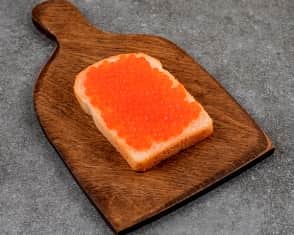
Goldfish will eat their own eggs so consider adding a layer of marbles in the bottom of your breeding tank. The fertilized eggs will fall through the marbles where the parents can’t eat them. After mating is complete, move the adults to a different tank. When the eggs hatch the juveniles can be fed foods appropriate for fry.
You can turn your aquarium fish hobby into an income producing side hustle.
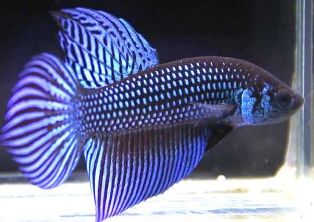
Create a website like mine to earn enough to buy aquariums, or fish, or equipment or if you work hard enough, retire from your 9 to 5.
I used "Divi" website creator to make this website. It costs $89/year (this comes out to about $7/month.)
Tap this ad to find out more.
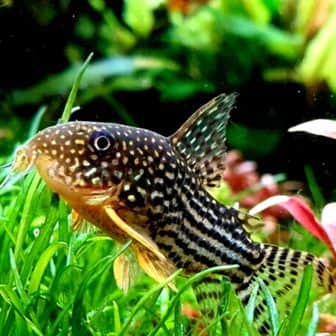
Goldfish Diseases
Goldfish do get ill, especially when housed in poor conditions. If left untreated, it would be just a matter of time before you find them floating dead in the tank. With this in mind, it is vital to understand common goldfish diseases, their symptoms and treatment options.
Widespread symptoms for most goldfish diseases include difficulty swimming, scratching against objects, red-streaked fins, swimming upside down or sideways, and inflamed skin.
If any of your goldfish get diseased then, unfortunately, the whole herd may have to be put down.
When it comes to treatment, always move the infected fish to a quarantine tank to ensure the disease does not spread. You’ll use an appropriate medicine to treat the condition. In addition, you might be required to change the contaminated water in phases or add salt to disinfect it.
This is super important: Keep the goldfish’s tank clean and you might never run into a problem with disease.
Conclusion
Goldfish are exceptionally common for a reason. They are easy to maintain compared to other types of freshwater aquarium fish, and they come in wide variety of very unique types. With all these exciting benefits at your disposal, it is not surprising that the goldfish is such a popular fish both in the home and in the skillet.
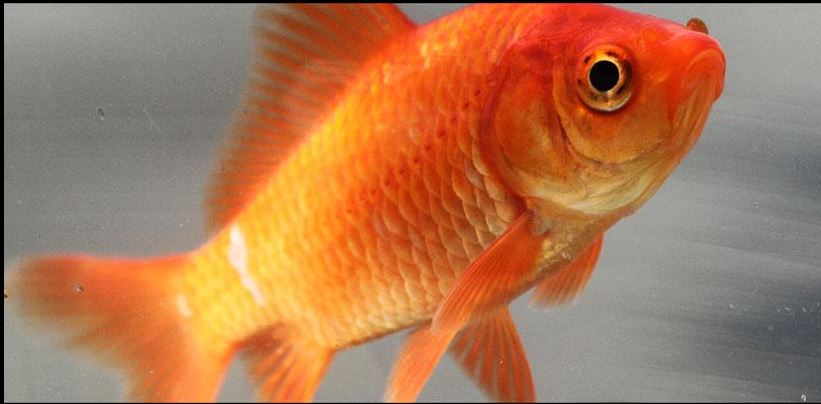
By Bjwebb at English Wikipedia – Transferred from en.wikipedia to Commons by Fastilysock using CommonsHelper., Public Domain, Link
More information about Goldfish (mostly scientific):
Fishbase – Goldfish, Carassius auratus
https://www.fishipedia.fr/fr/poissons/carassius-auratus
https://www.discoverlife.org/20/q?search=Carassius+auratus&b=FB271
Article: How to care for your new fish bowl
“If you look closely, in the middle of the picture of my 2 gallon, seen through the water, is a black wire coming up from the heater. This heater lays flat underneath (not in) the aquarium bowl…”
Confessions of an Angelfish Keeper - A Guide to Angelfish Care
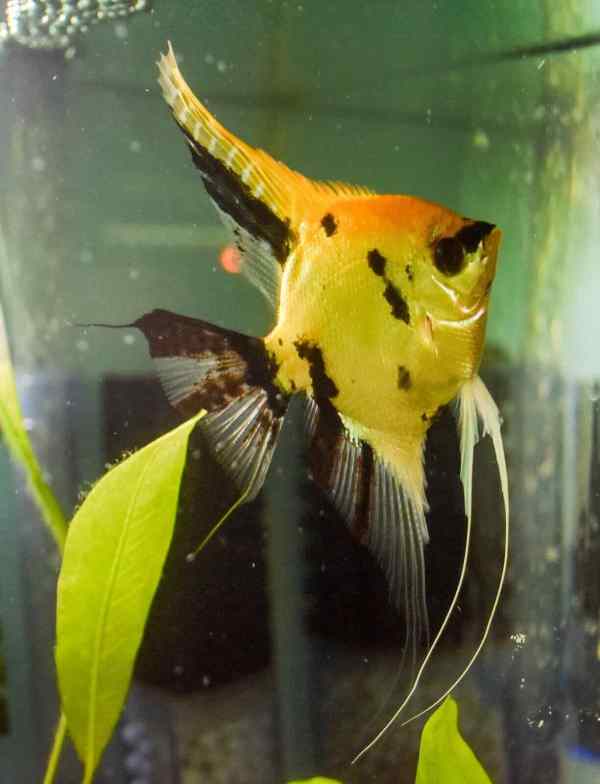
The Ultimate Guide to Bristlenose Plecostomus Fish: Care, Breeding, and More!
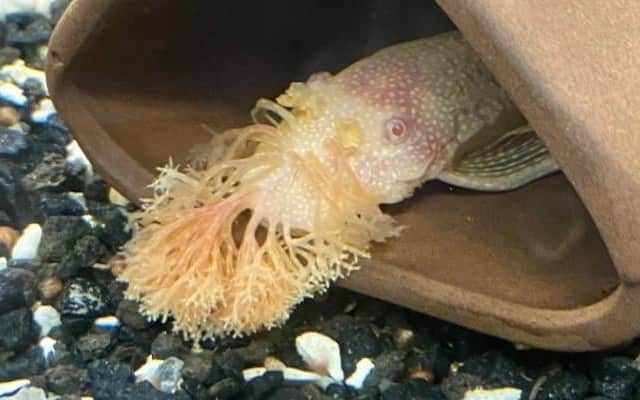
These bizarre looking fish look like they came from another, alien world. Don’t believe me? Check out the picture above.
An 8 point guide to taking beautiful aquarium pictures
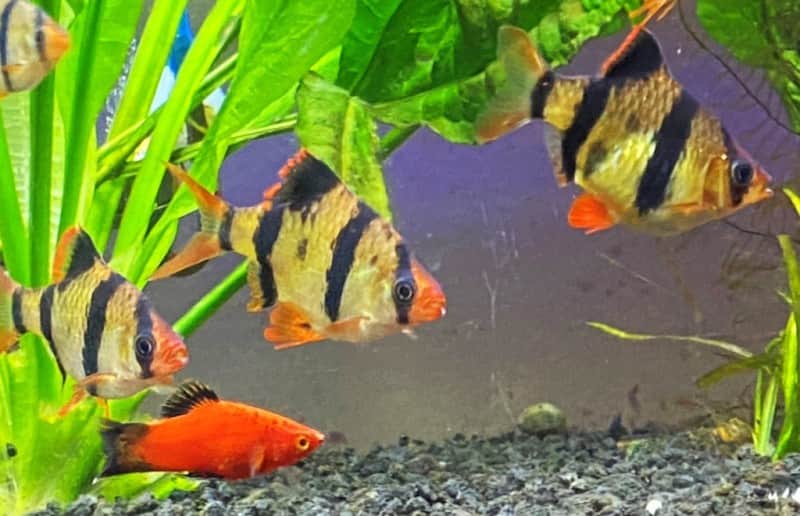
“Fish usually don’t stop moving, making it hard to get a good photo…”
Farlowella Catfish – Whiptail Catfish, Twig Catfish – Farlowella oxyrryncha

“An omnivorous species. In its natural environment, it feeds mainly on algae. In the aquarium, this catfish may not readily accept dry foods, and alternative foods such as fresh vegetables should be given. Once dry foods are accepted, feed them plant-based and spirulina algae foods regularly.”
